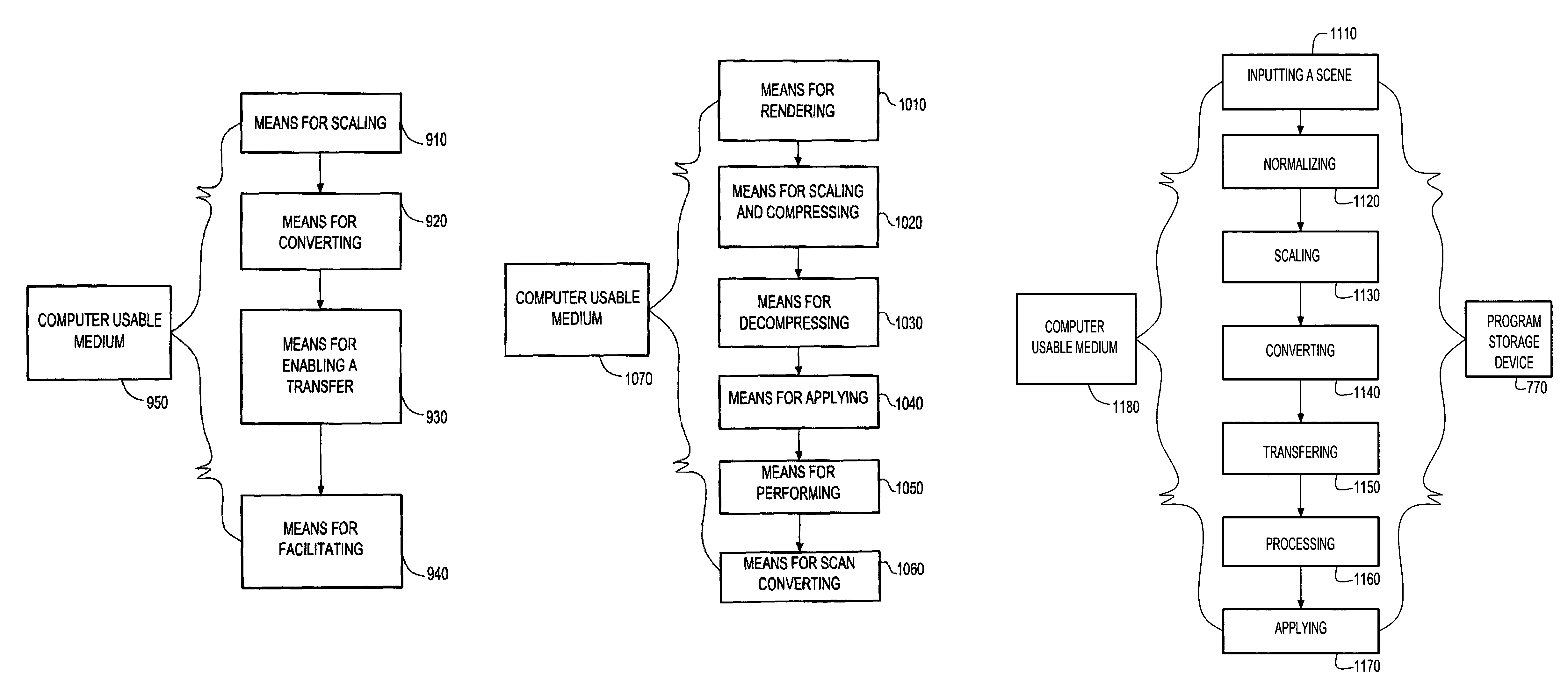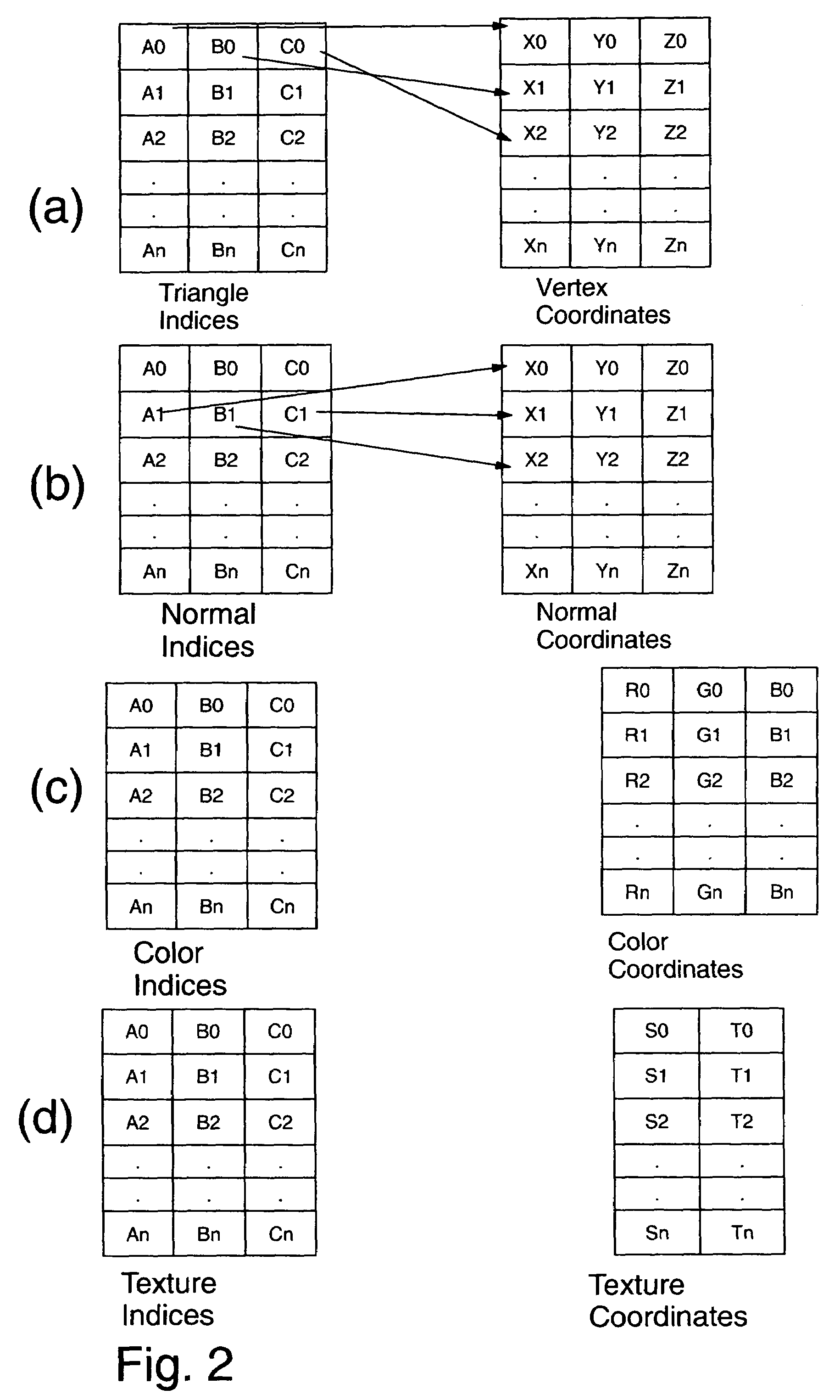Fast lighting processors
a processing device and fast technology, applied in the field of 3d model lighting, can solve the problems of inability to execute the lighting equation in real time without sacrificing quality or accuracy, and is problematic for low-power devices such as cell phones and personal digital assistants, and achieve the effect of facilitating lighting and shading, and efficient calculation of diffuse lighting intensities
- Summary
- Abstract
- Description
- Claims
- Application Information
AI Technical Summary
Benefits of technology
Problems solved by technology
Method used
Image
Examples
Embodiment Construction
[0041]This invention provides methods, apparatus and systems generally employing a two tier approach to fast lighting of 3D Geometric models. In an example embodiment, first VRML (or any other scene description file format) models are used as the source data for 3D geometric models. VRML (Virtual Reality Modeling Language) has been existent for several years and although there is no clear standard in the field of WEB graphics, VRML is an appropriate transfer format for WEB graphics. Most commercial 3D display systems would process VRML directly to light 3D geometric models, but to better solve the compute resource constraints of low power devices such as cell phones and handheld, this invention preprocesses the VRML geometric model data before it is used to display 3D lit geometric models. Preprocessing can be done off-line with a Converter application (as was done with the implementation of this invention) or alternatively and perhaps more seamlessly, can be done during synchroniza...
PUM
 Login to View More
Login to View More Abstract
Description
Claims
Application Information
 Login to View More
Login to View More - R&D
- Intellectual Property
- Life Sciences
- Materials
- Tech Scout
- Unparalleled Data Quality
- Higher Quality Content
- 60% Fewer Hallucinations
Browse by: Latest US Patents, China's latest patents, Technical Efficacy Thesaurus, Application Domain, Technology Topic, Popular Technical Reports.
© 2025 PatSnap. All rights reserved.Legal|Privacy policy|Modern Slavery Act Transparency Statement|Sitemap|About US| Contact US: help@patsnap.com



